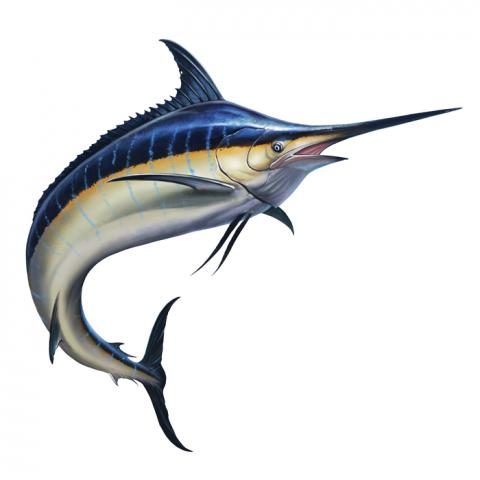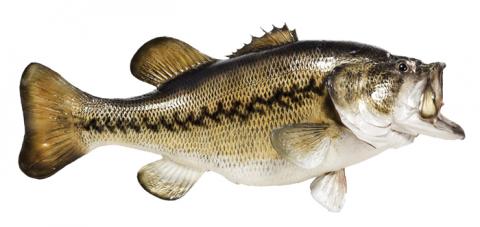Tracking the world’s fastest fish
Top End anglers are helping Charles Darwin University researchers track billfish – the iconic and highly sought-after sports species that include marlin and sailfish.

The research project is led by Dr Keller Kopf, Professor Hamish Campbell and PhD candidate Matt Hammond. It aims to learn more about how billfish move and why northern Australia is so productive for certain types of billfish.
They hope to track 25 billfish in waters around the Northern Territory and have called on the fishing community to help catch and tag the fish.
“Billfish are notoriously difficult to catch. It’s considered an achievement just to get a marlin or a sailfish to take an interest in your bait,” says Matt.
Along with billfish movement and ecology, he hopes to learn more about how the acoustic and satellite tags work and the effect they have on the fish.
Acoustic tags emit a signal picked up by buoys stationed in billfish hotspots. Satellite tags collect data on the fish’s location, depth and movement. They are released within 12 months, floating to the surface and transmitting data to a satellite.
“The billfish’s size and speed make them sought-after trophies for anglers, which means there is potential scope to develop sustainable fisheries tourism in the Top End,” Matt says.
Supported by FRDC, the project is a collaboration between the Northern Territory Department of Industry, Tourism and Trade, the Australian Institute of Marine Science, the Amateur Fishermen’s Association of the Northern Territory, and fisheries ecologists. f
More information: www.cdu.edu.au/riel/news/tracking-worlds-fastest-fish
Fish-free feed ‘feasible’
 Total replacement of fishmeal and fish oil in feed for Largemouth Bass (Micropterus salmoides) is both feasible and economically viable, according to a new study published in the journal Aquaculture Research.
Total replacement of fishmeal and fish oil in feed for Largemouth Bass (Micropterus salmoides) is both feasible and economically viable, according to a new study published in the journal Aquaculture Research.
The fish fed experimental feeds without fishmeal or fish oil had higher ratios of DHA (docosahexaenoic acid) to EPA (eicosapentaenoic acid) than those fed commercial feeds. DHA and EPA are omega-3 fatty acids that are known for boosting brain and heart health, and for their anti-inflammatory effects. Experimental feeds using algae produced the highest ratio.
This study is a step towards removing the supply chain bottlenecks by testing more available and sustainable ingredients that will make seafood available into the future. The study was supported by the F3 – Future of Fish Feed’s Feed Innovation Network. f
More information: onlinelibrary.wiley.com/doi/10.1111/are.15815?af=R
Microplastics could cause parasite spread
Microplastics can carry disease-causing pathogens from the land into the ocean, with negative consequences for human and wildlife health, according to a study from the University of California, Davis.

The study is the first to connect microplastics in the ocean with land-based pathogens. The findings indicate that, by hitchhiking on microplastics, pathogens can disperse throughout the ocean, reaching places a land parasite would normally never be found.
The pathogens studied – Toxoplasma gondii (found in cat faeces) and the gastrointestinal disease-causing Cryptosporidium and Giardia – can infect humans and animals. These are now found throughout the ocean and are recognised by the World Health Organization as underestimated causes of illness from shellfish consumption.
“It’s easy for people to dismiss plastic problems as something that doesn’t matter for them, like, ‘I’m not a turtle in the ocean;
I won’t choke on this thing’,” says corresponding author Associate Professor Karen Shapiro. “But once you start talking about disease and health, there’s more power to implement change. Microplastics can actually move germs around, and these germs end up in our water and our food.”
Microplastics are tiny plastic particles smaller than five millimetres, no bigger than a grain of rice. They’ve contaminated waters as remote as Antarctica.
Two types of microplastics were examined: polyethylene microbeads (found in cosmetics) and polyester microfibres (from clothing and fishing nets). The research found more parasites adhered to microfibres than to microbeads, though both can carry land pathogens.
Co-author Assistant Professor Chelsea Rochman from the University of Toronto says the work demonstrates the importance of preventing sources of microplastics from reaching the oceans. “Mitigation strategies include filters on washing machines … bioretention cells or other technologies to treat stormwater, and best management practices to prevent microplastic release from plastic industries and construction sites.” f
More information: www.ucdavis.edu/health/news/pathogens-can-hitch-ride-plastic-reach-sea





